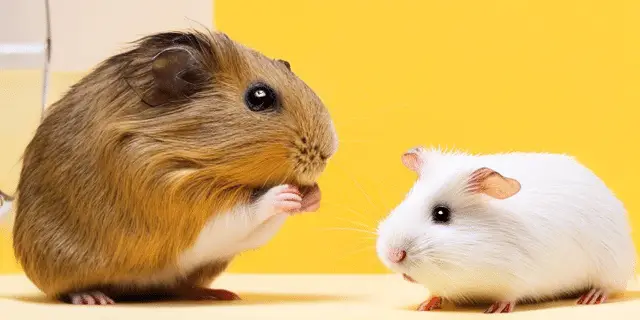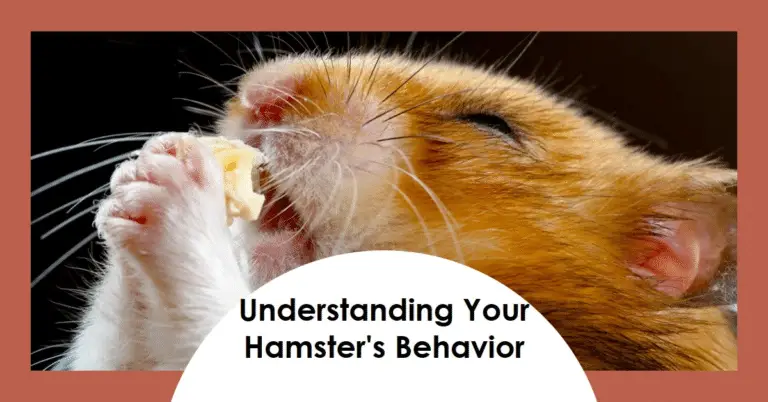Introduction
As a devoted hamster owner, witnessing your furry friend exhibit concerning behaviors can be distressing. One particularly alarming behavior is when a hamster appears to be engaging in self-destructive or suicidal actions. While hamsters do not possess the cognitive capacity to intentionally harm themselves, certain behaviors may be misinterpreted as suicidal tendencies. In this comprehensive guide, we’ll explore the potential reasons behind these troubling actions and provide insights to help you better understand and address your hamster’s well-being.
Stress and Anxiety
Hamsters are prey animals and can become easily stressed or anxious in captive environments. Stress and anxiety can manifest in various concerning behaviors, such as excessive grooming, bar chewing, or even self-mutilation. These actions may seem self-destructive, but they are often coping mechanisms for your hamster to deal with psychological distress.
Potential causes of stress and anxiety in hamsters include:
- Inadequate housing: A cage that is too small, lacks proper enrichment, or has inadequate bedding can lead to stress and frustration.
- Lack of privacy: Hamsters are solitary animals and may feel stressed if their cage is placed in a high-traffic area or if they are constantly disturbed.
- Improper handling: Rough or excessive handling can cause fear and anxiety in hamsters.
- Changes in routine or environment: Any sudden changes, such as rearranging the cage or introducing new objects, can be stressful for a hamster.
To alleviate stress and anxiety, ensure that your hamster’s living environment is spacious, enriched with appropriate toys and accessories, and provides ample privacy. Handle your hamster gently and infrequently, and make any necessary changes to their environment gradually to minimize stress.
Health Issues
Certain health problems can also lead to behaviors that may appear self-destructive. Hamsters are prone to various medical conditions that can manifest in concerning physical and behavioral changes.
Common health issues that may cause self-mutilation or self-harm behaviors include:
- Skin conditions: Dry skin, allergies, or parasites can cause intense itching, leading to excessive grooming and potentially self-inflicted wounds.
- Dental problems: Overgrown or misaligned teeth can cause pain and discomfort, prompting a hamster to chew on cage bars or other objects in an attempt to alleviate the discomfort.
- Neurological disorders: Conditions like strokes, head trauma, or brain tumors can affect a hamster’s behavior and lead to erratic or self-injurious actions.
- Pain or discomfort: Injuries, infections, or internal issues can cause a hamster to exhibit behaviors that may seem self-destructive as a way to cope with the pain or discomfort.
If you suspect a health issue is contributing to your hamster’s concerning behavior, it’s essential to consult with a qualified exotic animal veterinarian. Early diagnosis and treatment can help address the underlying problem and potentially resolve the associated behaviors.
Boredom and Lack of Stimulation
Hamsters are intelligent and curious animals that require mental stimulation to thrive. When their environment lacks adequate enrichment or opportunities for natural behaviors, boredom can set in, leading to repetitive or destructive behaviors.
Signs of boredom and lack of stimulation in hamsters may include:
- Bar chewing or cage biting
- Excessive digging or burrowing
- Pacing or repetitive movements
- Overgrooming or self-mutilation
To combat boredom, provide your hamster with a variety of engaging toys and activities. Rotate different objects, such as tunnels, chew toys, puzzles, and foraging opportunities, to keep their environment mentally stimulating. Additionally, consider offering safe activities outside of the cage, such as supervised playtime in a secure area or a hamster ball (with proper supervision).
Behavioral Disorders
In rare cases, hamsters may exhibit behaviors that resemble self-harm or suicidal tendencies due to underlying behavioral disorders. These conditions are not well understood but may be related to genetic factors, neurological issues, or early life experiences.
Potential behavioral disorders that could contribute to self-injurious behaviors include:
- Obsessive-compulsive disorder (OCD): Hamsters with OCD may engage in repetitive, excessive grooming or self-mutilation.
- Stereotypic behaviors: These are repetitive, ritualized behaviors that serve no apparent purpose, such as pacing, bar chewing, or head bobbing.
- Aggression or self-injury: Some hamsters may display unprovoked aggression or self-directed biting or scratching.
If you suspect your hamster may be exhibiting signs of a behavioral disorder, it’s crucial to consult with a qualified exotic animal veterinarian or animal behaviorist. They can help identify the root cause and provide guidance on appropriate management strategies.
Environmental Enrichment and Positive Reinforcement
Regardless of the underlying cause, addressing your hamster’s concerning behaviors requires a comprehensive approach focused on environmental enrichment and positive reinforcement.
Environmental Enrichment:
- Provide a spacious cage with ample bedding for burrowing and nesting.
- Offer a variety of toys, tunnels, chew sticks, and other safe objects to encourage natural behaviors.
- Rotate toys and objects regularly to maintain novelty and stimulation.
- Consider adding a hamster wheel or other exercise equipment to promote physical activity.
- Provide hiding spots and multiple levels to create a stimulating environment.
Positive Reinforcement:
- Use positive reinforcement techniques, such as offering healthy treats or praise, to encourage desired behaviors.
- Avoid punishing or scolding your hamster, as this can increase stress and anxiety.
- Interact with your hamster gently and on their terms, allowing them to approach you.
- Provide playtime outside the cage in a secure, supervised area to promote exploration and bonding.
Seeking Professional Help
If your hamster’s concerning behaviors persist despite your efforts to enrich their environment and provide positive reinforcement, it’s essential to seek professional assistance. Consult with a qualified exotic animal veterinarian or an animal behaviorist who specializes in small mammals.
These professionals can:
- Conduct a thorough examination to identify any underlying health issues.
- Assess your hamster’s environment and provide recommendations for improvement.
- Evaluate your hamster’s behavior and determine if there are any behavioral disorders that require specialized treatment.
- Provide guidance on appropriate management strategies and techniques to address the concerning behaviors.
- Recommend medications or supplements, if necessary, to help alleviate stress, anxiety, or other contributing factors.
Remember, early intervention and professional guidance can significantly improve your hamster’s well-being and quality of life.
Conclusion
While it may seem alarming when a hamster exhibits behaviors that appear self-destructive or suicidal, it’s important to understand that these actions are often manifestations of underlying stress, health issues, boredom, or behavioral disorders. By providing a enriched environment, addressing potential health concerns, and seeking professional assistance when needed, you can work towards improving your hamster’s well-being and resolving any concerning behaviors.
With patience, understanding, and a commitment to your furry friend’s care, you can help ensure your hamster leads a happy and healthy life. Remember, your attentive care and dedication as an owner play a crucial role in preventing and addressing any worrisome behaviors in your beloved pet.



